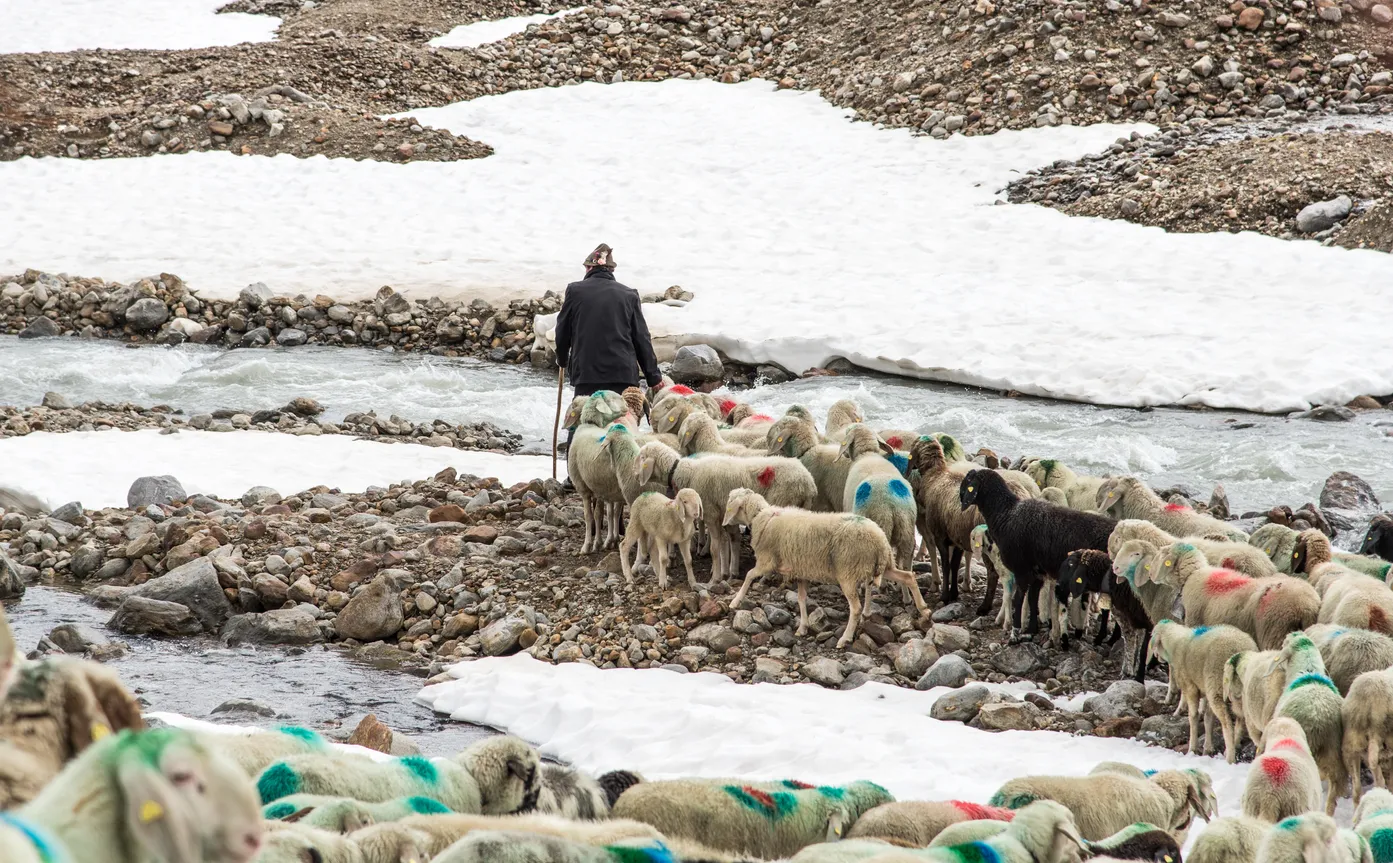The people of Schnalstal are said to be downright stubborn. I wonder if this has something to do with the fact that they have lived from and with sheep farming for centuries. Or is it actually the case? That some "stubborn buck" has copied his stubbornness from humans? It's hard to say for sure. But one thing is certain: the stubbornness of the Schnals Valley people has a tradition and now, in late summer, it concerns them precisely. During the traditional drive of the Schnals sheep over the glacier to Austria and back again, there are two "camps", each going their own way.
A tradition: The Schnals Stubborn Head
On the one hand there are the "Niedertoler", who walk with their animals from Vernagt via the Tisental and the Similaun hut, the Niederjoch and the Martin-Busch hut to the Niedertal in Vent. And then there are the "Rofenberger", who march from Kurzras via the "Schöne Aussicht" refuge over the Hochjoch and the Hochjoch hospice to Rofenberg to Vent. You have guessed it: For generations there have been discussions, sometimes even passionate arguments, about which is the better, the "right" path. And now in late summer it is getting exciting again: the Niedertoler and the Rofenberger return home on the same weekend, but they celebrate separately: in Vernagt on Saturday and in Kurzras on Sunday. Of course, the numerous visitors are happy about this. Because it's better to celebrate twice.
UNESCO cultural heritage since 2019
There was a day, not so long ago, when the Rofenbergers and the Niedertolerers fell into each other's arms. They would never admit it today, but when it became known that UNESCO in faraway Bogotá had decided to include transhumance, as our sheep drive is also called, in the list of intangible cultural assets, there was pure happiness and unity among all the Schnals sheep farmers. Now it occurs to me that I am telling and telling and have completely forgotten to explain. Because I and my people always think that everyone knows anyway what exactly transhumance is and what makes it so special. But here again from the beginning: Transhumance is one of the oldest sheep exaggerations in the entire Alpine region. The grazing rights of the Schnals farmers in the Austrian Ötztal are already over a thousand (!) years old. The special thing about the transhumance is that the sheep drive in the Schnals Valley is the only one that crosses a glacier and a national border. Three to four thousand sheep and also some goats, together with the shepherds, owners and many other helpers, cross up to more than 44 kilometres in two days. We'll tell you about the outward journey in June another time, but now in September it is extremely popular with locals and guests to meet the sheep on their way home. If you want to get a room in the region during this time, you should be early enough. If you are very lucky, you will spend the night at Oberraindlhof in the "Transhumanz" room, which is a homage to this living piece of cultural history through and through. Take a look at it right now!
